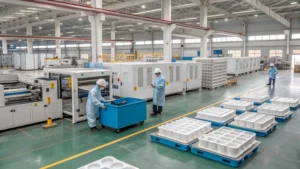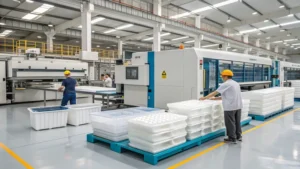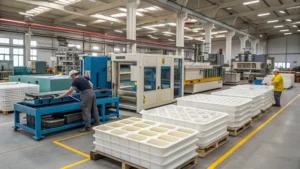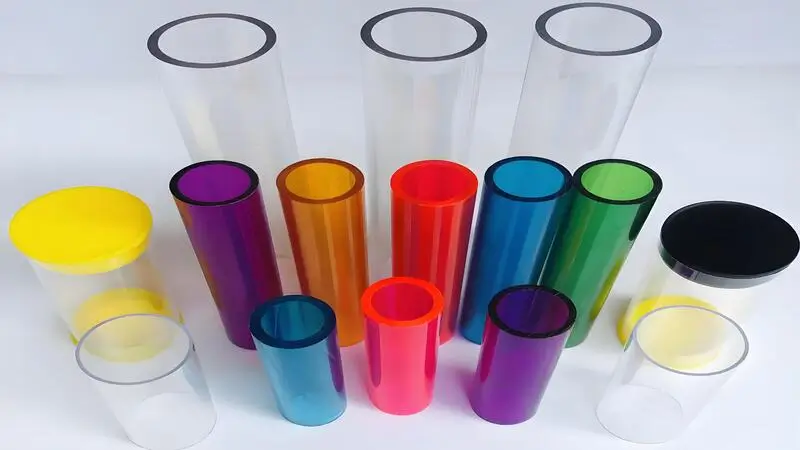
Ensuring color consistency1 in extruded products is vital for maintaining product quality, meeting customer expectations, and reinforcing brand identity. Color consistency refers to achieving a uniform color across an entire extruded product and maintaining that uniformity across multiple production batches. This is especially critical in industries where appearance is tied to quality perception, such as consumer goods, automotive components, and medical devices.
Color consistency in extruded products is achieved through careful material selection2, precise process control, and rigorous quality checks, ensuring uniform color across batches and meeting industry standards.
In this article, we’ll explore the key factors influencing color consistency, the practical steps to achieve it, the common challenges manufacturers face, and the tools used to measure and maintain it. Understanding these elements can help manufacturers deliver high-quality extruded products that meet both aesthetic and functional requirements.
Color consistency is only important for aesthetic purposes.False
While aesthetics are a key driver, color consistency also reflects process stability and material quality, which are essential for functional performance in industries like automotive and medical manufacturing.
Spectrophotometers are essential tools for measuring color consistency in extruded products.True
Spectrophotometers deliver precise, objective color measurements, enabling accurate monitoring and control throughout production.
What are the Key Factors Affecting Color Consistency in Extruded Products?
Color consistency in extruded products hinges on several interconnected factors: material selection, process parameters, and quality control3 measures. Each plays a pivotal role in ensuring the final product meets color specifications.

Key factors affecting color consistency include resin and colorant compatibility, extrusion process parameters4 like temperature and speed, and rigorous quality control using tools like spectrophotometers.
| Factor | Impact on Color Consistency | Notes |
|---|---|---|
| Material Selection | Ensures proper colorant dispersion and stability | Compatibility is critical |
| Process Parameters | Affects melting, mixing, and color distribution | Precision in control is key |
| Quality Control | Identifies deviations early | Regular checks are vital |
Material Selection
The foundation of color consistency lies in choosing the right resin and colorant. Resins like polyethylene (PE) or polypropylene (PP) must be compatible with the selected colorants or masterbatches to ensure even dispersion and prevent color shifts during extrusion. Poor compatibility can lead to clumping or uneven coloring, undermining the final product’s appearance.

Process Parameters
Extrusion process conditions significantly influence how colorants integrate with the resin:
-
Temperature: Too high a temperature can degrade colorants, altering the hue, while too low a temperature may prevent proper melting and mixing.
-
Screw Speed: Determines residence time and mixing intensity, affecting color uniformity.
-
Pressure: Impacts the flow and dispersion of the colorant within the polymer melt.
Quality Control Measures
Ongoing quality control is essential to detect and correct color variations early. Regular measurements and visual inspections under standardized lighting conditions help maintain consistency throughout production runs.
Material selection is the most critical factor for color consistency.True
Choosing compatible resins and colorants establishes the foundation for uniform dispersion and stable color output.
Process parameters have no impact on color consistency if materials are selected correctly.False
Even with optimal materials, improper temperature, speed, or pressure settings can disrupt color uniformity.
What are the Steps to Ensure Color Consistency During the Extrusion Process?
Achieving consistent color in extruded products requires a structured approach, from material preparation to final inspection.

To ensure color consistency, select compatible materials, optimize extrusion parameters, and perform regular quality checks using precise measurement tools.
Selecting the Right Materials
- Opt for resins and colorants tested for compatibility and stability under extrusion conditions.

- Use high-quality colorants with excellent dispersion properties to avoid uneven coloring.
Setting Up the Extrusion Process
-
Adjust temperature profiles to melt the resin effectively without degrading the colorant.
-
Fine-tune screw speed and design for thorough mixing and uniform color distribution.
-
Control pressure to ensure consistent flow and dispersion throughout the melt.
Implementing Quality Checks
-
Measure color at multiple production stages using tools like spectrophotometers5.
-
Conduct visual inspections under standardized lighting (e.g., D65 illuminant) to verify uniformity.
-
Define color tolerances (e.g., DE00 < 1.0) to set clear acceptance criteria.
Regular quality checks are unnecessary if the extrusion process is well-controlled.False
Even a well-tuned process can experience variations, making regular checks indispensable for consistency.
Spectrophotometers provide the most accurate color measurements for extruded products.True
Their precision and objectivity make spectrophotometers ideal for monitoring and maintaining color standards.
What are the Common Challenges and How to Overcome Them?
Color consistency in extrusion isn’t without its hurdles, but these challenges can be addressed with targeted solutions.

Common challenges include variations in raw materials, inadequate mixing, and process fluctuations, which can be overcome through supplier vetting, improved mixing techniques, and strict process control.
Variations in Raw Materials
-
Challenge: Inconsistent resin or colorant quality can cause color shifts between batches.
-
Solution: Partner with reliable suppliers and conduct incoming quality checks to verify material consistency.

Inadequate Mixing
-
Challenge: Poor colorant dispersion can result in streaks or patchy coloring.
-
Solution: Enhance mixing with optimized screw designs or additional mixing elements.
Process Fluctuations
-
Challenge: Variations in temperature, speed, or pressure can lead to unintended color changes.
-
Solution: Use automated process control systems6 to maintain stable operating conditions.
Inadequate mixing is the primary cause of color inconsistency in extruded products.False
While mixing is critical, material variations and process instability can also significantly affect color outcomes.
Strict process control can eliminate all color variations in extruded products.False
Process control reduces variations, but some residual differences persist due to material and environmental factors, requiring ongoing quality checks.
How is Color Consistency Measured and Controlled?
Accurate measurement and control are the backbone of maintaining color consistency, ensuring extruded products align with predefined standards.
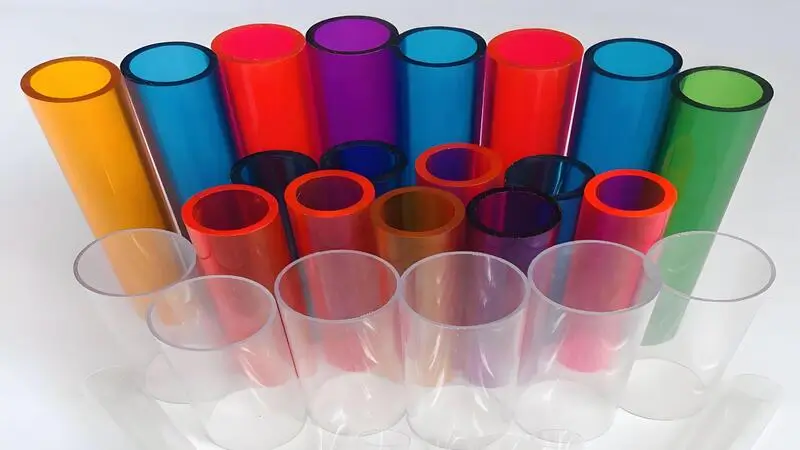
Color consistency is measured using spectrophotometers and controlled through established color standards, tolerances, and regular monitoring during production.
Tools for Measurement
-
Spectrophotometers: Deliver precise color data in formats like CIE Lab*, enabling objective comparisons.
-
Colorimeters: Provide a portable, cost-effective option, though less accurate than spectrophotometers.
-
Visual Inspection: Useful for quick checks but subjective and less reliable for precision.
| Measurement Tool | Pros | Cons |
|---|---|---|
| Spectrophotometer | Highly accurate, objective | Requires equipment and training |
| Colorimeter | Portable, cost-effective | Less precise than spectrophotometer |
| Visual Inspection | Fast and simple | Subjective, prone to error |
Establishing Standards and Tolerances
-
Set color standards using industry-accepted color spaces and define tolerances (e.g., DE00 < 1.0) to limit acceptable variation.
-
Use consistent lighting conditions (e.g., D65) for all assessments to ensure reliability.
Frequency of Measurements
-
Perform checks on raw materials, during extrusion, and on finished products.
-
Increase monitoring during process changes or new batch introductions to catch deviations early.
Visual inspection is sufficient for ensuring color consistency in high-volume production.False
Visual methods lack the precision needed for large-scale production, where subtle differences can go unnoticed.
Establishing tight color tolerances ensures zero color variation in extruded products.False
Tight tolerances minimize variation, but achieving zero variation is impractical due to inherent material and process variability.
Conclusion
Ensuring color consistency in extruded products demands a comprehensive approach that integrates material selection, process optimization, and rigorous quality control. By addressing key factors, following structured steps, overcoming common challenges, and leveraging advanced measurement tools, manufacturers can achieve the uniformity required in today’s competitive markets. Consistent color not only enhances visual appeal but also signals a commitment to quality and reliability, making it a cornerstone of successful extrusion manufacturing.
-
Exploring best practices can help manufacturers enhance product quality and meet customer expectations effectively. ↩
-
Understanding the impact of material selection can lead to better product outcomes and improved brand identity. ↩
-
Learning about quality control measures can help manufacturers identify deviations early and ensure high standards. ↩
-
Discover the critical extrusion parameters that influence product quality and how to optimize them for better results. ↩
-
Learn about the role of spectrophotometers in ensuring accurate color measurement and quality control in manufacturing. ↩
-
Discover how automated systems can enhance production efficiency and maintain quality control in manufacturing processes. ↩



